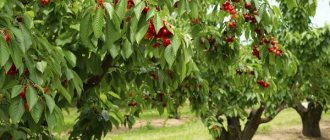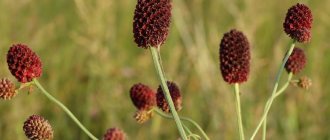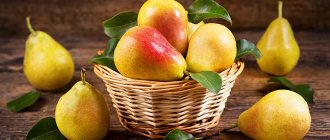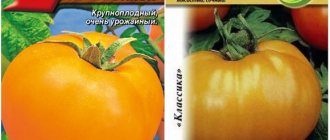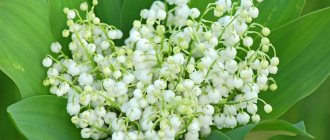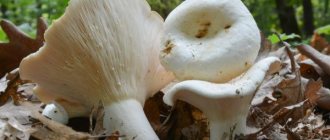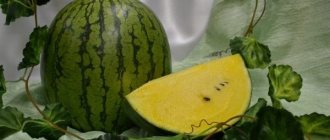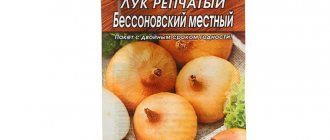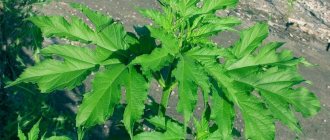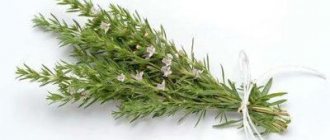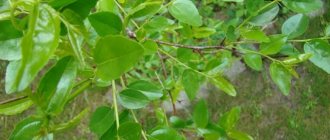What is it, what does it look like and how does it bloom?
Horseradish is a herbaceous perennial. Belongs to the Cabbage family and the Horseradish genus of the same name. It is grown as a vegetable plant. Horseradish has large oblong leaves and tall stems (it grows up to one and a half meters in height). Blooms with small white abundant flowers. It is distinguished by a rather thick, long fleshy root.
Application
Horseradish is a universal plant that is widely used in cooking, medicine and even in cosmetology. Moreover, the leaves, flowers and roots of the plant have certain healing and nutritional properties. The main thing is to learn to use horseradish wisely to avoid possible side effects.
In cooking
The pungent taste of horseradish has led to the fact that it is often used as a seasoning for pickling or pickling cabbage, cucumbers or mushrooms. There are also many types of sauces made from the root of this plant, which are great for jellied meat or fish. For example, a mixture of grated horseradish and sour cream is an excellent dressing option for carp, cod or salmon.
In medicine
In folk medicine, horseradish is used for:
- toothache;
- sore throat, bronchitis and runny nose;
- liver diseases;
- swelling;
- open wounds;
- inflammatory processes;
- dermatitis;
- physical and mental exhaustion.
When losing weight
Once in the body, horseradish begins to participate in processes that prevent constipation. It helps speed up metabolism and helps remove excess fluid and toxins from the body. All this helps reduce fat and weight loss. In addition, the root of this plant is used for anti-cellulite wraps.
In cosmetology
Homemade horseradish masks have antiseptic properties. With their help, you can get rid of skin rashes, prevent the appearance of various inflammations, renew cells and even out your complexion. In addition, the substances contained in this plant will help get rid of pigmentation, improve blood circulation and restore elasticity to the skin.
History of origin
Originally, horseradish is a wild plant that lives in Europe (except for the Far North), the Caucasus and Siberia. Horseradish has also taken root on the American continent and in Asia.
Two species grow in Russia:
- ordinary;
- meadow
The first is on the European territory of the Russian Federation, the second is in Siberia. Wild horseradish prefers moist soil and often grows along river banks. It is believed that it began to be cultivated and used as a seasoning back in the 9th century.
Horseradish: what is it
Horseradish (Armoracia rusticana) is a perennial herbaceous, aromatic, rhizome plant of the cruciferous (cabbage) family. It is found in the wild throughout Europe, Siberia, and the North Caucasus. The culture has also adapted perfectly to the conditions of North America, where it was brought relatively recently.
The plant prefers well-moistened soil, so it inhabits lowlands, banks of reservoirs and shady areas of forest. If its spread is not limited in the garden, it will occupy a large area in one season. It is very difficult to fight it as a weed, because the root system goes 2-5 m into the ground, and a new root or shoot can form from each bud on the rhizome.
Horseradish became a garden resident in our country back in the 6th century. Now it’s hard to imagine a summer cottage or a household plot without it. In cooking, it is used as a spicy seasoning and to add flavor to preparations. In the first case, the rhizome is used, in the second - the leaves.
What does horseradish look like?
In the first year, the plant forms a rosette of 6-10 large green leaves on hard and long petioles. The leaf is entire, the edge is crenate. In the second year it produces a peduncle in the form of an erect branched stem from 0.5 to 1.5 m long.
The buds bloom in early June. Flowering lasts 30-40 days. By mid-July the process is completed. The flowers are small, white, fragrant, collected in a brush. One flower lives from two to five days, blooming every morning and closing in the evening. The fruit is a pod.
Horseradish in the photo.
Horseradish root
This is the most valuable part of the plant in cooking. The root is taproot, fleshy and thick, up to 10 cm in diameter, with well-developed appendages. Along the entire length of the root, dormant buds are arranged in a spiral shape, from which rosettes of leaves or new roots are formed.
Important! If you divide the rhizome into several parts and leave them in the soil, each can form a new plant.
The roots are covered with hard, light yellow bark. The radius of the rhizome is up to 0.6 m, the depth is 0.3 m. The main rod can overcome a depth of 5 m.
Seeds
The plant produces fruits in the second year of life. By mid-August, 1-2 cm long pods containing four seeds each form in place of the inflorescences. They are very small, dark red or brown in color. Germination is poor - out of ten seeds only 2-3 germinate.
Important! Garden forms of horseradish, as a rule, do not set seeds. Reproduction occurs by vegetative means.
Horseradish is a herb, vegetable, or root vegetable.
From a botanical point of view, horseradish is a perennial herb; from a culinary point of view, it is a spicy vegetable. But it is incorrect to call the underground part of a plant a root crop, although such a definition is often found in everyday life. The type of horseradish root is rhizome.
The benefits and harms of vegetables
Our ancestors knew about the benefits of horseradish centuries ago.
It is not only a seasoning, but also a medicinal plant known for its healing properties. Horseradish is good because:
- helps digestion;
- stimulates the secretion of gastric juice during meals;
- increases appetite;
- improves intestinal function;
- contains vitamins;
- disinfecting volatile substances (phytoncides).
We invite you to watch a video about the beneficial and harmful properties of horseradish:
Useful and harmful properties of horseradish
Fresh grated horseradish is an ancient medicine for many ailments.
Benefits of horseradish
Horseradish is rich in nutrients, which, when entering the body, act in different directions and, thus, make it healthier as a whole.
- Thus, the presence of potassium in this vegetable helps to normalize the functioning of the heart and blood vessels - this element improves the activity of the heart muscle and supplies oxygen to the blood vessels. Regular consumption of horseradish helps maintain the health of the cardiovascular system and prevents diseases of these organs.
- Horseradish also contains a unique organic substance, sinigrin, which has powerful antioxidant properties. It fights free radicals, preventing cell mutation, helps strengthen the immune system, and activates the production of white blood cells if the body needs it.
- Mustard oil, which gives the vegetable its characteristic pungency, as well as mineral salts, work to benefit our digestion. They improve the functioning of the gastrointestinal tract, accelerate the absorption of nutrients, improve intestinal function and peristalsis, and activate the production of enzymes necessary for high-quality digestion of food.
- Based on the previous point, we can conclude that regular consumption of horseradish improves bowel movements, and also, with the help of coarse fiber, cleanses the body of waste and toxins.
- The antibiotic properties of the plant have a positive effect on the condition of the genitourinary tract. This natural antibiotic stops inflammatory processes in the bladder, accumulating in the urine and destroying harmful bacteria. In addition, horseradish is a mild diuretic, which contributes to the effective treatment of genitourinary infections.
- The rhizomes of this plant contain quite a noticeable amount of calcium, especially for people who get it exclusively from plant sources. If you include horseradish in your diet, you can avoid the development of osteoporosis, as it helps strengthen bone tissue.
- Horseradish contains folic acid (vitamin B9), which, as you know, is necessary for the unborn child and his mother. Of course, pregnant women should not overuse hot seasoning, but sometimes, a little of this vitamin in its natural form as a snack with your favorite dishes definitely won’t hurt.
- As noted above, horseradish roots contain coarse fiber, and, moreover, this product is low in calories. It improves metabolism, burns fat, promotes rapid saturation, and therefore effective weight loss.
- Also, with the help of horseradish, you can overcome staphylococcus, E. coli and other infections, as well as parasites, mucus and allergy attacks.
Horseradish damage
Well, of course, such an “evil” vegetable cannot be a panacea for everyone. It should be borne in mind that its excessive consumption negatively affects the mucous membranes of the digestive organs, especially if a person suffers from serious ailments - pancreatitis, gastritis, enterocolitis, high acidity, inflammation of the digestive organs, liver and kidney diseases.
And remember about sensitive skin, for which burning horseradish can cause a lot of trouble - from redness to burns or even gangrene.
Back to contents
Plant treatment
Traditional medicine advises:
- Use horseradish root juice as a rub for rheumatism.
- Rinse your mouth and throat for infectious diseases of the oral cavity (sore throat, pharyngitis, inflammation of the gums).
- Compresses made from horseradish tincture or grated root are an alternative to classic mustard plasters.
- Regular consumption of a small amount of horseradish in food gives a general strengthening, tonic effect.
Read more about the medicinal properties of horseradish here, and read more about the prevention of diseases and treatment of potency with horseradish in this material.
Varieties, types and their photos
You should choose a variety according to zoning (varieties for the Middle Zone are not suitable for Siberian frosts). Also pay attention to the characteristics of the variety (when it ripens, etc.).
Suzdal
It has an even root without branches, length up to 30 cm, dense juicy root crop. A well-proven variety.
Atlant
A variety that is resistant even to severe frosts and droughts. Optimal for the harsh Siberian and Far Eastern climates. Well-kept, high-quality crispy white root pulp. Mid-season.
Valkovsky (Wild)
Late-ripening variety with juicy white root pulp. Relevant for home canned products.
Latvian
Well suited for central Russian regions.
Tolpukhovsky
Smooth roots of regular shape, juicy white pulp. The variety overwinters well; therefore, it is sometimes preferred to grow it for its spicy leaves, while the roots are left in the ground for the winter.
Japanese wasabi
Belongs to exotic species. It is not resistant to temperature changes, so in cool climates, successful cultivation is more likely in a greenhouse than in open ground. When growing without a greenhouse, you need to maintain sufficient humidity, cover from the sun and mulch to prevent overheating.
When to plant horseradish before winter and why: a word from experienced gardeners
Not all summer residents realize the possibility of winter planting. Meanwhile, horseradish has long been planted in Rus' before winter - at the end of September and in October. And today, experienced gardeners practice planting before winter. There are several reasons for this.
- In regions with late spring, planting before winter will give an early harvest: horseradish is ready for harvesting not at the end of autumn, but just in time for the canning season - without it, you can’t pickle the right cucumbers, tomatoes, or adjika.
- This is hardening: the plant is cold-resistant, but the germinating buds do not welcome return frosts. Winter crops are not afraid of spring frost.
- The optimal temperature is up to +20...+25 °C: at high temperatures, growth is inhibited. When planting in autumn, part of the growing season passes at temperatures that are comfortable for the crop.
- In the spring there is a lot of work in the garden and at the dacha: one joy - even if the horseradish is planted in the fall.
Time to plant horseradish before winter
According to popular wisdom, it is time to plant horseradish before winter, with the beginning of leaf fall, with the first night frosts and before the onset of stable negative temperatures.
According to reviews, planting in mid-October in the Moscow region, central Russia, will produce a generous harvest. A little further north, horseradish is planted before winter a little earlier, in mid-to-late September.
The rules for planting horseradish before winter are simple. The main thing is to comply with the basic requirements of culture.
Step-by-step instructions for growing
Landing
We decide on a site (horseradish is a perennial, it is best to choose a place where it can grow for many years). It is advisable to choose a place not in bright sun, but slightly shaded. Horseradish roots can be planted in autumn and early spring.
Interesting and important detail! It is necessary to plant the root exactly as it originally grew (not “upside down”!). So when digging up roots in the autumn, it is best to make cuts of different shapes at the top and bottom of the root (beveled and even).
We place the root in the ground at an angle (approximately 45°). We do not bury the root: it is enough to cover it with four centimeters of soil. 30 cm is the minimum distance between plants, 70 cm between rows.
Care
It's quite simple. Regular watering (so that the soil does not dry out). Timely weeding and loosening. In the fall, it would be a good idea to add organic matter to the soil on the site. After the horseradish has taken root in the spring and sprouted, you can fertilize it with potassium-nitrogen fertilizer. Further feeding is not superfluous, but it is realistic to do without it.
Harvest and storage
When to dig up and cut horseradish? Root crops are harvested in mid-autumn, closer to November (or in early spring, before the first leaves appear). The best in taste and keeping quality are two to three year old horseradish rhizomes. In the fall, you need to cut the leaves from the bush, then dig it up with a pitchfork and collect it from the ground by hand. It is advisable to dig deeper: the rhizomes can go deep into the ground. It is necessary to sort the largest and most even specimens. These are the ones that will go into storage.
In the basement, horseradish is stored in wooden boxes with clean and damp sand. Can be placed together with carrots or other root vegetables (horseradish at the bottom of the container, carrots on top, everything sprinkled with sand). It is worth spraying the sand with water from a spray bottle periodically.
Under the same conditions, horseradish is preserved on the balcony of an ordinary city apartment. If there is no balcony, use the refrigerator. Washed, thoroughly wiped from moisture and hermetically sealed in cellophane, the root vegetable will remain fresh for several months. You can also freeze the chopped roots. Dried horseradish, grated, or a sauce made from it also retains its consumer qualities well.
Read more about how to grow horseradish here.
Harvest and storage
Horseradish leaves can be cut throughout the season and used as additives in salads, first courses, and when pickling and pickling cucumbers and tomatoes. Complete harvesting is carried out in late autumn before the soil freezes (approximately at the end of October). It is by this time that the roots accumulate the maximum amount of nutrients and have good juiciness and taste. The signal for harvesting is yellowing and dying of leaves. Before harvesting, they are completely cut off, and then they dig up the bush with a pitchfork, take out the rhizome, and sort through the soil to remove all the remnants of the roots.
Important! It is better to clear the rhizome from the soil and cut it not in the garden, since in this case the area may become clogged with fragments of roots, which can germinate and clog the area in the spring.
Horseradish is a high-yielding crop. Approximately 1.5–2 kg of roots are obtained from one square meter. About 60% of them (with a diameter of 1.5 cm) can be used for storage and processing, the thinner ones (about 1 cm in diameter) are left for planting the next season. Roots of smaller diameter are unsuitable for use and go to waste.
Horseradish greens at room temperature retain their commercial qualities for three days. If you place it in a plastic bag and store it in the refrigerator, the shelf life will increase to three weeks.
Treated roots are immediately sent for processing and storage, otherwise they will lose their elasticity. Horseradish roots are stored in the basement, covered with sand. It is very practical to store dried horseradish, the powder from which is excellent for making sauces and seasonings. Drying can be done in natural conditions, or you can also use an electric dryer or oven.
Dried horseradish roots can be ground using a coffee grinder or food processor, grated on a fine grater or crushed in a mortar
Many housewives freeze the vegetable and use it as needed. When stored in the freezer, the nutritional properties of horseradish are preserved for six months.
How to remove it from the garden?
Horseradish has the “superpower” of taking over large spaces and can easily spread throughout an entire area. The root system sometimes reaches seven meters! Even from a small piece of root left in the ground, a new bush will sprout in the spring. What to do?
- The most environmentally friendly and effective way: in the spring we cover the first sprouts of horseradish with any light-proof material. Horseradish will not be able to grow in the dark and will die. Next year the procedure may have to be repeated. It depends on how powerful the root system is in the ground.
- Another option is herbicides, chemicals that kill the plant.
Attention! The method is dangerous and not environmentally friendly! Be careful not to damage other plants in the area.
The fight against horseradish in the garden can last for more than one year. It is optimal to prevent horseradish from spreading throughout the area from the very beginning by digging metal sheets into the ground around the bed. Or place an iron box or barrel in the ground and plant horseradish in it.
We invite you to watch a video about how you can remove horseradish from your garden:
Horseradish varieties for growing on a windowsill
Despite the fact that there are more than 50 varieties of this plant in nature, Horseradish is usually planted. It is considered the most unpretentious in care. At the same time, it has a pronounced taste. I have horseradish of the Suzdal variety growing. This variety has been known since ancient times. According to legend, it was grown in Suzdal and was considered the strongest and most vigorous root vegetable.
Those who like to experiment can try varieties such as:
- Valkovsky.
- Atlant.
- Malinsky.
- Latvian.
All these varieties are distinguished by a pronounced rich taste, a long rhizome with milky white pulp. They tolerate a lack of moisture well and produce abundant greenery.
Diseases and pests
Despite its unpretentiousness in general, horseradish is susceptible to a number of diseases and attacks by insect pests. Let's look at the main dangers.
- Babanukha (cabbage or horseradish leaf beetle).
A small beetle that can completely destroy horseradish leaves. First aid: immediately remove the affected parts of the plant. You can try to collect adult beetles and larvae by hand. In the event of a massive spread of beetles on a home plantation, it is optimal to deep dig the soil and then treat the horseradish with Karbofos or similar. - Cabbage fire. A butterfly whose larvae feed on horseradish leaves.
Methods of prevention and control: early planting of horseradish, if necessary, treatment with drugs (“Actellik”, “Inta-vir”, etc.). - Wavy flea. A tiny, barely visible bug that can cause serious harm by devouring horseradish leaves.
Prevention: harvesting tops in the fall, after harvesting, deep digging of the soil. In spring and summer, during the growth of horseradish, you also need to loosen the soil in the beds with horseradish. If the wavy flea still appears, then insecticides are used.
If the horseradish is infected with parasites, you can try setting up glue traps for them. For example, apply strips of honey to the leaves.
The most dangerous horseradish diseases are provoked by pathogenic fungi:
- White rot affects horseradish rhizomes (a “web” of mycelium is visible on the affected plants).
Prevention: do not over-moisten the soil, do not thicken the bushes when planting, weed the beds in a timely manner.If the fungus does appear, remove the affected plants and treat the remaining bushes with fungicidal preparations containing copper.
If you find that white rot has affected horseradish, you need to change the area under this crop next year. We haven’t planted horseradish on the previous site for at least three years!
- Verticillium wilt. The leaves begin to wither from below, and soon all the plants die. Methods of struggle are only radical. The affected plants are removed, as is the soil from under the diseased bush. It is necessary to loosen the soil well after watering. In autumn - destroy all leaves and stems of plants remaining after harvesting, dig up the area deeply.
Horseradish: three ways of planting
The soil for planting horseradish is prepared as follows: they dig up the soil to a depth of about 40 cm, into which fertilizers have already been applied before digging in the fall.
For 1 square meter - 5-9 kilograms of compost or rotted manure, 25 grams of urea, 50 grams of superphosphate and 35 grams of potassium chloride. If necessary, horseradish is grown in bulk beds.
Horseradish is propagated only by cuttings. Cuttings for planting material are prepared in the fall, when the horseradish crop is dug up. All small branches that are cut off from the rhizome are used for cuttings. Requirements for cuttings:
- For the southern regions - length about 25 cm, thickness not less than 0.5 cm.
- For the Central, North-Western regions and Siberia - length about 25 cm, thickness not less than 1 cm.
Since the planting material will have to be stored until spring, the lower part of the cutting is marked so as not to later confuse it with the upper. The easiest way to mark is by making an oblique cut. Store the cuttings in a cellar or basement, covered with any available material or buried in a box with soil. About a month before planting, the cuttings are brought into a bright room. To awaken dormant buds, cover the middle of the roots with burlap, and leave the upper and lower parts open. When the cuttings germinate, they are “blinded” just before planting in the prepared place.
The “blinding” procedure consists of removing all the buds from the middle of the cutting, which was under the burlap, both dormant and beginning to grow. “Blinding” is done with a hand dressed in a mitten, or with a piece of burlap. Buds that have begun to grow in the lower and upper parts of the cuttings are not removed.
"Blinding" helps prevent the formation of lateral branches of the rhizome, so that in the fall we will get cylindrical, even roots.
Now you can start planting the cuttings, which is done using planting pegs. A peg, which is about 5 cm longer than the cutting, is stuck into the prepared loose soil; the cutting is planted in the hole that will remain after the peg is removed. Here we will need an oblique cut made in the fall - it should be at the bottom. The cuttings are sprinkled with earth, the layer thickness is 3-5 cm, depending on the composition of the soil, the lighter it is, the thinner the layer should be. The distance between cuttings is 30 cm, between rows -70 cm.
We told you about vertical planting of horseradish; There are two more planting methods: horizontal and inclined.
MihkelForumHouse Member
For two-year-old cuttings, the maximum yield is from inclined cuttings. For annuals (planted in the spring and harvested in the fall), the maximum yield is for those planted horizontally.
But horizontal planting has a big drawback - it awakens many extra buds, the root will turn out to be branched, sloppy and inconvenient for storage.
Immediately after planting, we can “put the tambourine aside” until the fall - horseradish will not require any more dancing from us, we will only need to weed it a couple of times during the season and water it several times.
Growing as a business
Growing horseradish as a business idea looks quite attractive. The undemanding nature of the crop, coupled with high productivity, promises a good income. From a small plot of five acres, theoretically, you can collect up to a ton of rhizomes.
On an industrial scale, horseradish roots are usually used. However, leaves are sometimes put up for sale. Estimated prices in 2021:
- Horseradish leaf – about 36 rubles/kg.
- Root – from 40 to 350 rubles/kg.
The main problem, perhaps, is finding wholesale buyers. You can offer products directly to manufacturers of “horseradish” seasonings or publish your offer on specialized message boards on the Internet. Of course, in agriculture there is always a risk of crop failure. But this applies to any crop, not just horseradish.
Read more about growing henna on an industrial scale here.
For yourself or for sale, but this simple plant is worth setting aside a plot on your site. The benefits, taste, ease of cultivation and storage make horseradish an indispensable resident of the Russian garden. As you can see, cultivating it is quite simple. With minimal effort, it's easy to get a solid amount of hot, pungent harvest. Vigorous root vegetables are the basis of people’s favorite spices, which is always welcome on the everyday and festive table!
Growing from seeds
New breeding varieties of horseradish with distinctive taste properties and ripening periods are constantly appearing. Growing roots from purchased seeds is done in early spring, when the soil warms up to + 5 ° C, or in late autumn, “before winter,” 12–14 days before stable frosts. The seed is planted in the soil to a depth of 2.5–3 cm. A distance of 90 cm is left between the rows, and seeds are placed in the row at intervals of 7–10 cm. The seed is not afraid of frost. Shoots appear on the first warm days, 4–7 days after planting.
